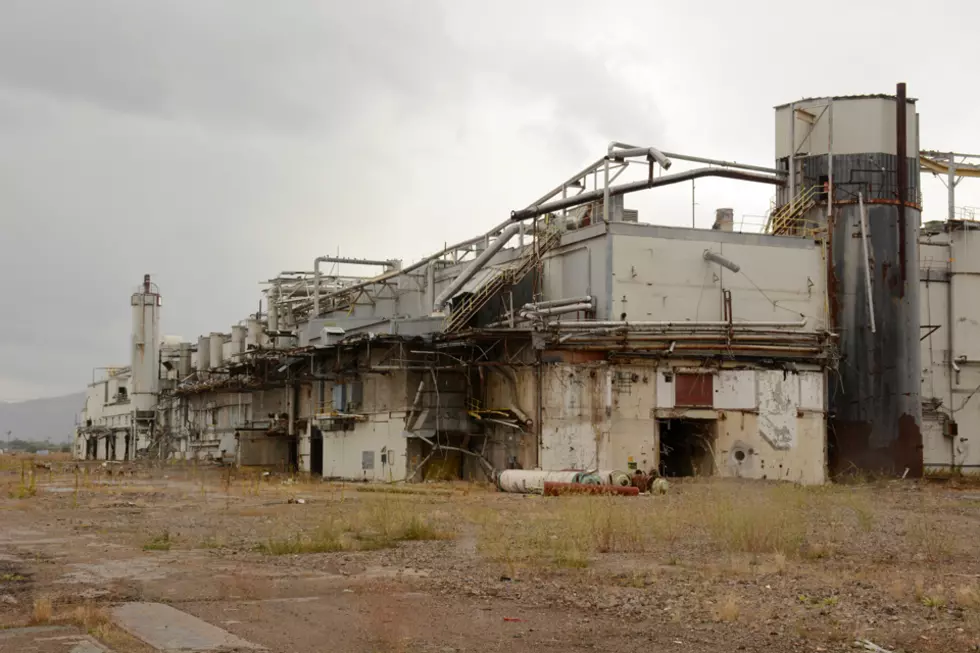
Federal shutdown stops monitoring, cleanup efforts at Frenchtown pulp mill site
When trying to restore a contaminated area, it’s helpful to have a clear goal for the final result.
That was the conclusion of those attending Thursday night’s meeting of the Smurfit-Stone Mill Site Community Advisory Group.
While the thought might seem obvious, it’s easily lost during protracted studies and meetings when community members are just trying to grasp all the details, rules and regulations involved in a cleanup.
On Thursday, there was the added complication of having no Environmental Protection Agency representative at the meeting. Due to the federal government shutdown, EPA representative Allie Archer could not give the group an update on ongoing monitoring at the former pulp and paper mill site.
In December, it was announced that Archer would replace retiring EPA remedial project manager Sarah Sparks.
Without Archer there, Montana Department of Environmental Quality representative Keith Large also didn’t attend the meeting, leaving group members uncertain about how the project will progress.
Fish, Wildlife & Parks fisheries biologist David Schmetterling said fish collected during the summer were still on ice in the EPA’s Denver lab. He didn’t know when the group might learn how toxins from the mill site affect fish.
“People want this information. It was very publicized that this sampling was taking place, and there was a lot of interest in the community, rightly so, because of our consumption advisories,” Schmetterling said.
With work on hold, the group agreed to focus on what participants saw as possible outcomes once the cleanup is underway.
Mary Price, staff scientist with the Confederated Salish and Kootenai Tribes, presented the goals of the CSKT, which probably go the farthest in returning the site to its natural state.
“One of the big takeaways I got from being involved in the Milltown project is you really gotta know where you’re going, where are you trying to get to, what’s it going to look like when it’s all over?” Price said. “I don’t think we’ve really engaged in that conversation yet on the Smurfit site.”
The CSKT are involved in restoring all of the Clark Fork River because the 1855 Hellgate Treaty, which established the Flathead Reservation, promised that the tribes would have the right to hunt and fish in “all usual and accustomed places.” In other words, tribal members retain those rights in areas they frequented before the treaty, which includes the western half of Montana and parts of Idaho.
Later, laws were passed that require the U.S. government to consult with tribes on projects that could affect treaty rights, putting tribes on equal footing with federal and state governments when dealing with environmental problems.
So when the federal government gets involved in river cleanup projects that would affect fish or wildlife in western Montana, the EPA is required to consult with the CSKT.
Price said the CSKT have an ancient association with the Clark Fork and Blackfoot rivers so tribal members want to be able to hunt, fish and gather plants and berries along as much of the river as possible. Ecological health is the same as human health for the CSKT.
Price showed an aerial photo of the Smurfit-Stone site from 1955, a year or so before the mill was built. Several side channels and oxbows crisscrossed the floodplain between large stands of cottonwood trees on the north side of the river. That’s what the CSKT want to see again, Price said.
Now, that area is denuded and contains large rectangular waste pits isolated from the river by a berm.
“From the tribal government's perspective, in very simple terms, we would like all the sources of the contaminants out there removed. And particularly any source that can enter the Clark Fork River, its tributaries or its floodplain,” Price said. “Get it back to the pre-industrial condition. People know how to do this. It’s large scale, but it’s not a complicated project, compared to the Milltown Dam removal.”
After some people raised doubts that the project could go that far, the group decided to start developing a shared vision of what the site would ultimately look like. They agreed to apply for a technical assistance grant to do vision planning.
Uncertain as to how long the federal government shutdown would last, the group delayed the EPA update until March. For the February meeting, they scheduled presentations from the Montana Resource Damage Program and the Clark Fork Coalition on final restoration possibilities.
Contact Laura Lundquist at lundquist@missoulacurrent.com.
